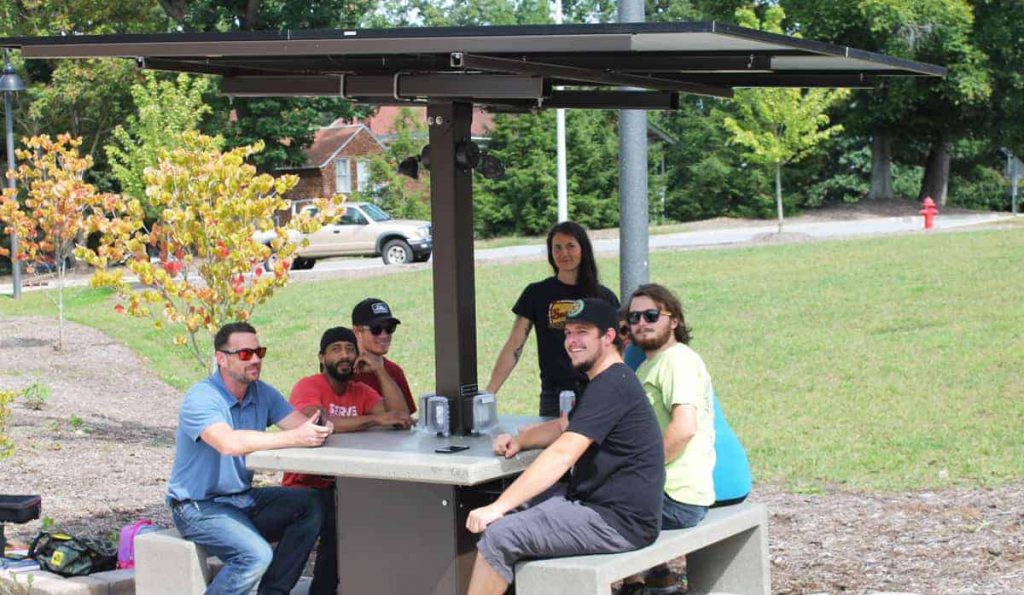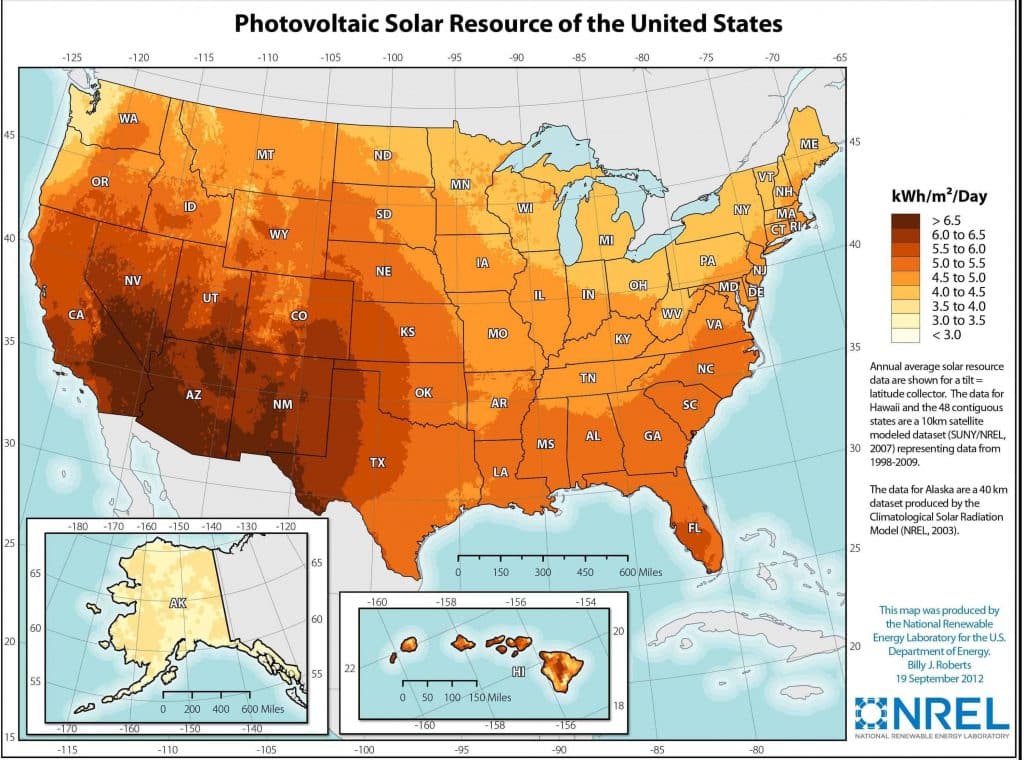Renewable energy is becoming an increasingly large part of the lives of people around the world.
Wind turbines and solar panels, for example, are becoming more ubiquitous. This leads to the question, what is renewable energy? Also, why does it matter?
This article will attempt to answer these questions.

Definition of renewable energy
Renewable energy is derived from natural resources that are continually being replenished so that the energy source can last indefinitely. Examples include wind, water, and solar power.
Renewable energy sources are contrasted with non-renewable energy sources such as fossil fuels which are not being replenished and will one day be depleted.
Although renewable sources of energy are virtually inexhaustible, the energy is usually produced in limited amounts, which is the main disadvantage of most renewable sources compared to nonrenewable fossil fuels.
Types of renewable energy
The major types of renewable energy are solar power, geothermal power, wind power, water or hydroelectric power, and biomass.
Solar
Solar power uses energy that is directly from the sun. The sun is very important in that solar energy is the ultimate source of most fuel sources that we use.
There are multiple ways to gather energy from the sun and use it. One way is thermal solar power where energy from the sun is used to heat up water or air.
Solar-powered heating systems for air and water will use solar panels to absorb heat energy that is used to heat up water. In thermal solar power plants, the sun’s energy is used to heat water into steam which is then used to spin turbines and produce electricity.
Solar radiation can also be converted directly into electricity by making a solar panel with photovoltaic cells.

The use of solar power is most common in areas with a high amount of annual sunlight such as the American Southwest.
Check out our awesome solar powered tables!
Improve your sustainability with our innovative and fun solutions.
See the DashView WorkstationsGeothermal
Geothermal energy production relies on heat from within the planet. Earth’s interior is still hot from its formation and the decay of radioactive elements within the planet contribute to this internal heat.
This internal heat will usually come out onto the surface in the form of volcanoes and features, such as hot springs and geysers.
Most sources of geothermal energy are located along tectonic plate boundaries where heat is being carried to the surface through molten rock which feeds volcanoes.
Geothermal power plants are often close to geysers, hot springs and other geologically derived heat sources.
Usually, the method will involve using heat from geothermal reservoirs to transform water into steam to spin turbines to generate electricity. Locations in the United States best known for geothermal sources are the western states, particularly California and Hawaii.
Wind
Wind is used to spin turbines that are attached to generators that produce electricity. Wind is produced when air masses of different temperatures interact with each other.
As an air mass warms, it will become less dense and will begin to rise. Denser, colder air will come in to take its place. This displacement of air results in wind.
Wind has been used for thousands of years to propel ships and watercraft. It has also been used in pumping water and grinding grain.
More recently, wind has also been used to generate electricity. Part of the reason for this is that the use of wind power results in fewer carbon emissions and atmospheric pollutants than the burning of fossil fuels.
Wind power is commonly used in the United States, Europe, China, and India. It is used in areas with strong winds, including areas with an abundance of low round hills and open plains.
In the United States, places where it is commonly used are California near Tehachapi and Montana.
The down sides to wind power are that the turbines used to generate electricity from wind are very large and visually affect the landscape.
Also, some birds and bats have met their demise while facing wind turbines. Furthermore, materials used to make the turbines are often made using methods that may harm the environment and still require fossil fuels.

Water
Hydropower, like many other energy sources on Earth, is ultimately the result of the sun’s influence. Water evaporates from rivers and oceans and then precipitates to contribute to the flowing mass of rivers and streams. Eventually, it flows into the ocean to be evaporated again.
Hydropower is typically used at places where flowing water is abundant, including the Columbia River in Washington and Niagara Falls in New York. It is also used near the oceans where the energy of the tides is utilized to generate power.
At these locations, flowing water is used in some way to spin turbines that are used to create electricity.
Hydroelectric power does not produce as many carbon emissions or pollutants in the atmosphere as fossil fuels, though the building of dams to use rivers for hydroelectric power can have negative effects on the environment downstream.
The locations in the United States that produce the most hydroelectric power are Oregon, California, Washington, and New York because of the large rivers and dams that have been built in those states.
Biomass
Biomass relies on the continually replenished products of living organisms such as wood, grain, and organic waste.
This biomass can be burned directly, or it can be converted into liquid biofuels such as biogas and biodiesel.
The most common form of biomass is wood which has been used for thousands of years to heat homes and to cook meals. Wood can also be burned to produce electricity.
Other forms of biomass that are used include crops, such as corn, oil palm trees, and sugarcane, specifically grown for biofuels and organic trash. Biofuels are used all over the world.
It accounts for about 15% of the world’s energy production and 35% of the developing world’s energy production.
Some concerns over using biomass and biofuels include that the land and fertilizers used to grow biofuel crops could also be used for food crops, creating a possible competition between two necessities.
The U.S. government supports research on alternative crops for biofuels that do not compete with food crops and that require less fertilizer and pesticides than crops like sugarcane and corn.
Significant amounts of natural vegetation also must be cleared to make room for the biofuel crops.
Nonetheless, the effects on the environment from biofuels are not as problematic as the effects of fossil fuels.
The source of biomass is ultimately solar energy since plants require sunlight because of photosynthesis, and most of the sources of biomass are plants.
The advantages of biomass include that it can be produced locally almost anywhere, and it is mostly carbon neutral since plants grown to replenish biofuels will absorb an amount of carbon dioxide and other greenhouses gases equal to the amount that is emitted through the use of biomass and biofuels for energy production.
Advantages of renewable energy
Renewable energy generally produces fewer carbon emissions on average than energy gained from the burning of fossil fuels.
Renewable energy sources are also less disruptive to the environment. Furthermore, they are rapidly becoming cheaper than fossils fuels and renewable energy industries tend to produce more jobs, over all, than fossil fuel industries.
This makes renewable energy a lucrative option for the future of the energy sector.
Sunbolt Workstations are a great way to add a renewable energy source to your campus, park, or outdoor working space!


